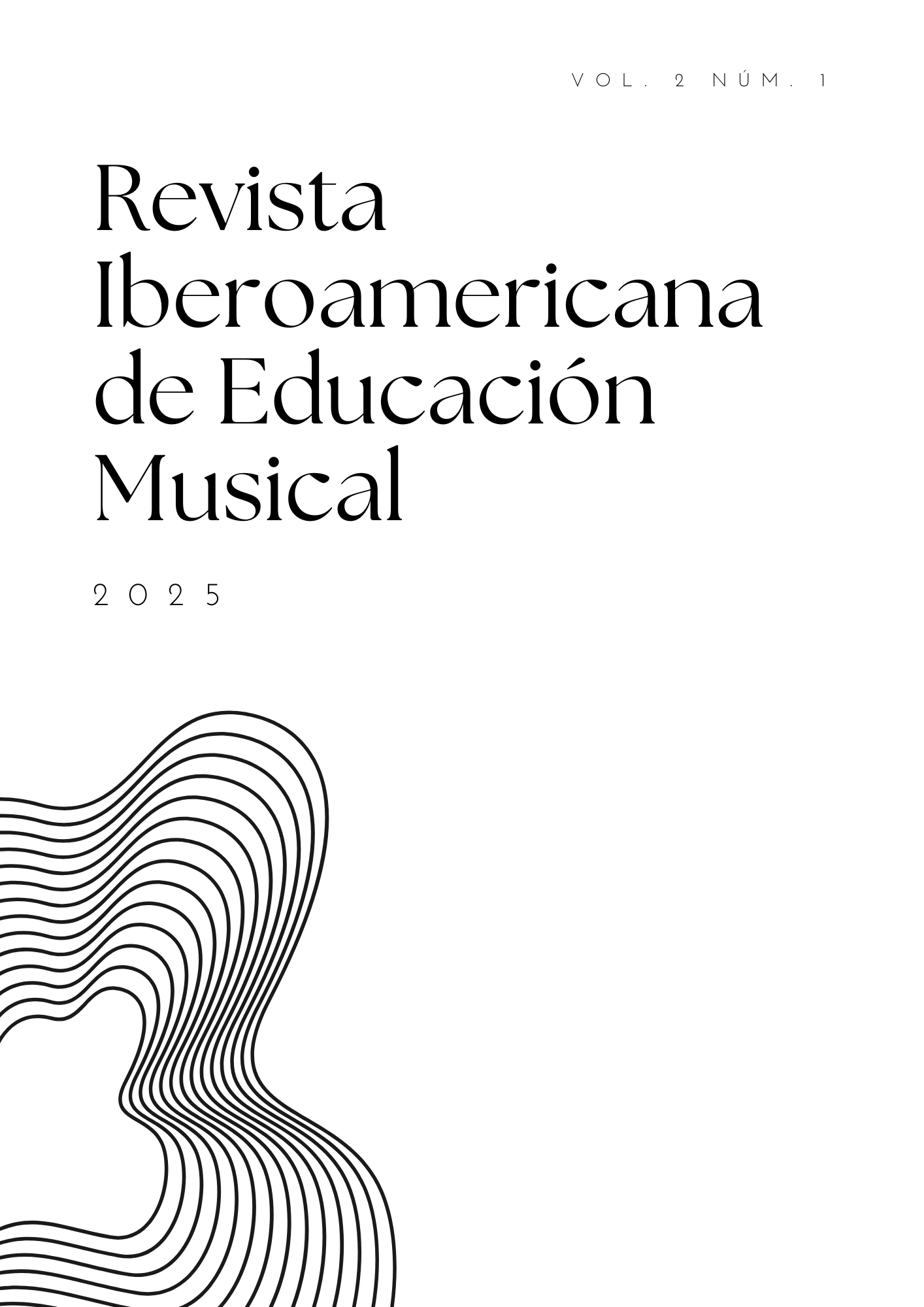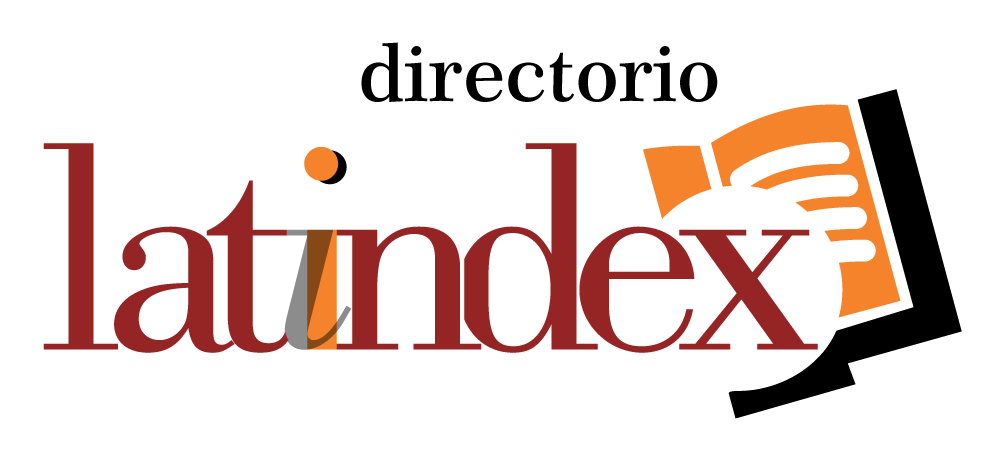La formación corporal y escénica en los conservatorios superiores de música de España. Un estudio exploratorio
Keywords:
Trastornos musculoesqueléticos, respiración, formación escénica, técnicas corporales, educación musical superior, respiración encarnada, corporeidadAbstract
This exploratory-descriptive study seeks to examine which musculoskeletal ailments and pathologies are most prevalent among students at higher music colleges in Spain and to detect the training deficiencies observed by students in terms of emotional, body and stage control. The results obtained through a questionnaire filled out by 401 undergraduate and graduate students in Higher Music Education Conservatories and Schools of Music show a prevalence of 59% of musculoskeletal disorders, among which tendinitis is the most prevalent. The origin of these disorders is related to inadequate body postures, stress and nervous tension during the practice with the instrument. Women in the sample present a slightly higher incidence of these ailments (63%) than men (55.7%), being the students of Singing, Composition, Jazz, Woodwind and Symphonic String, in this order, the specialties that most frequently report pain related to musical practice. As for training in these matters, 74.1% report having received some training in body techniques, 46,9% in relaxation techniques and emotional control, and 32.7% in stage training; however, this training is often offered at the conservatories as optional subjects or extracurricular seminars. Among the conclusions of the study is the fact that in Spain there is a curricular offer that pays little and unequal attention to the the scenic, emotional and corporal training, showing the need to incorporate this training within the compulsory curricula of the higher grade of music, with specialists, and from a holistic vision of the interpretative fact combining body, mind and emotions.
Downloads
References
American Educational Research Association, American Psychological Association y National Council on Measurement in Education. (2018). Estándares para pruebas educativas y psicológicas (M. Lieve, Trans.). American Educational Research Association.
Altenmüller, E., Ioannou, C. I., & Lee, A. (2015). Apollo's curse: neurological causes of motor impairments in musicians. In E. Altenmüller, S. Finger & F. Boller (Eds.), Progress in Brain Research (pp. 89–106). Elsevier. https://doi.org/10.1016/bs.pbr.2014.11.022
Arias, A., & Sireci, S. G. (2021). Validez y Validación para Pruebas Educativas y Psicológicas. Revista Iberoamericana de Psicología, 14(1), 11-22. https://reviberopsicologia.ibero.edu.co/article/view/1926
Baadjou, V. A. E., Roussel, N. A., Verbunt, J. A. M. C. F., Smeets, R. J. E. M., & de Bie, R. A. (2016). Systematic review: risk factors for musculoskeletal disorders in musicians. Occupational Medicine, 66(8), 614-622. https://doi.org/10.1093/occmed/kqw052
Ballenberger, N., Avermann, F., & Zalpour, C. (2023). Musculoskeletal Health Complaints and Associated Risk Factors in Freshmen Music Students. International Journal of Environmental Research and Public Health, 20(4), 1–14. https://doi.org/10.3390/ijerph20043169
Barrett, C. E. (2006). What Every Musician Needs to Know About the Body. Plan for Incorporating Body. American String Teacher, 34-37. https://doi.org/10.1177/000313130605600405
Brandfonbrener, A. G. (2009). History of Playing-Related Pain in 330 University Freshman Music Students. Medical Problems of Performing Artists, 24(1), 30–36. https://doi.org/10.21091/mppa.2009.1007
Cabral, P. A. (2019). CORPOESCENA: un enfoque transdisciplinario sobre el cuerpo en escena. Estudios sobre Arte Actual, (7), 181–186. https://dialnet.unirioja.es/descarga/articulo/7067409.pdf
Candisano Mera, J. A., & Franco-Vázquez, C. (2022). Educación somática en los planes de estudio de Piano en España . In R. Chao-Fernández, F. C. Rosa-Napal & A. Chao-Fernández (Eds.), Innovación e investigación en conservatorios y escuelas de música (pp. 33–43). Peter Lang. https://doi.org/10.3726/b19918
Cara, M. A., & Mitrovic, D. (2024). Coupling of anticipation and breathing in expert flute performance: the influence of musical structure and practice. Frontiers in Cognition, 3, 1–13. https://doi.org/10.3389/fcogn.2024.1425005
Conable, B. (2000). What Every Musician Needs to Know About the Body. The Practical Application of Body Mapping to Making Music. Andover Press.
Cruder, C., Soldini, E., Gleeson, N., & Barbero, M. (2023). Factors associated with increased risk of playing-related disorders among classical music students within the Risk of Music Students (RISMUS) longitudinal study. Scientific Reports, 13(22939), 1–11. https://doi.org/10.1038/s41598-023-49965-7
Escalante, F., Sancho-Andrés, M., Fortuny, A., & Lorenzo de Reizabal, M. (2024). Innovación educativa en Conservatorios y Escuelas Superiores de Música en España desde la perspectiva del profesorado. En A. M. Vernia Carrasco (Coord.), Educación y formación musical. Transformación social, empleabilidad y ODS (pp. 199-217). Dykinson. https://www.jstor.org/stable/jj.13286055.17
Fernández-Morante, B., de Paula Ortiz, F., & Blanco-Piñeiro, P. (2021). Profesionales de la psicología como docentes en los conservatorios de música: hacia una educación musical sostenible. Papeles del Psicólogo, 42(1), 38–45. https://doi.org/10.23923/pap.psicol2021.2949
Finol, J. E. (2015). La corposfera. Antropo-semiótica de las cartografías del cuerpo. CIESPAL.
García Gómez, M. (2018). Las enfermedades profesionales de los músicos, el precio de la perfección. Archivos de Prevención de Riesgos Laborales, 21(1), 11–17. https://doi.org/10.12961/aprl.2018.21.01.3
García Martínez, R. (2015). Cómo preparar con éxito un concierto o audición. Redbook.
Gómez Remolina, L. Á. (2014). El cuerpo en la escena musical. (Pensamiento), (Palabra) y Obra (12), 84–90. https://doi.org/10.17227/2011804X.12PPO84.90
Gonzalez-Sanchez, V., Dahl, S., Hatfield, J. L., & Godøy, R. I. (2019). Characterizing Movement Fluency in Musical Performance: Toward a Generic Measure for Technology Enhanced Learning. Frontiers in Psychology, 10, 1–20. https://doi.org/10.3389/fpsyg.2019.00084
Hernández-Nieto, R. A. (2011). Instrumentos de recolección de datos en Ciencias Sociales y Ciencias Biomédicas. Universidad de los Andes.
Ioannou, C. I., & Altenmüller, E. (2015). Approaches to and Treatment Strategies for Playing-Related Pain Problems Among Czech Instrumental Music Students: An Epidemiological Study. Medical Problems of Performing Artists, 30(3), 135–142. https://doi.org/10.21091/mppa.2015.3027
Jordan, J., Moliterno, M., & Thomas, N. (2011). The Musician's Breath: The Role of Breathing in Human Expression. GIA Publications.
Kim, J. H. (2020). From the Body Image to the Body Schema, From the Proximal to the Distal: Embodied Musical Activity Toward Learning Instrumental Musical Skills. Frontiers in Psychology, 11(101), 1–8. https://doi.org/10.3389/fpsyg.2020.00101
Kreutz, G., Ginsborg, J., & Williamon, A. (2008). Health-promoting behaviours in conservatoire students. Psychology of Music, 37(1), 1–14. https://doi.org/10.1177/0305735607086047
López Cano, R. (2007). Semiótica, semiótica de la música y semiótica cognitivo-enactiva de la música. Notas para un manual de usuario. Didactic text (updated June 2007). http://rlopezcano.blogspot.com/2019/12/semiotica-semiotica-de-la-musica-y.html
López Cano, R. (2014). Música, mente y cuerpo. De la semiótica de la representación a una semiótica de la performatividad. In M. Fornaro (Ed.), De cerca, de lejos. Miradas actuales en Musicología de/sobre América Latina (pp. 41–78). Universidad de la República, Comisión Sectorial de Educación Permanente https:/www.academia.edu/965851/Música_mente_y_cuerpo_De_la_semiótica_de_la_representación_a_una_semiótica_de_la_performatividad
Martínez, I. (2008). Cognición enactiva y mente corporeizada: el componente imaginativo y metafórico de la audición musical. Estudios de Psicología, 29(1), 31–48. https://doi.org/10.1174/021093908783781419
Mashino, A., & Seye, E. (2020). The Corporeality of Sound and Movement in Performance. The World of Music, 9(1), 25–46. https://www.jstor.org/stable/26970253
McAllister, L. S. (2013). The Balanced Musician: Integrating Mind and Body for Peak Performance. The Scarecrow Press.
Muñiz, J. (2000). Teoría clásica de los tests [Clasical Tests Theory] (6.ª Ed.). Pirámide
Osburn, H.G. (2000). Coefficient Alpha and Related Internal Consistency Reliability Coefficients. Psychological Methods,5(2), 343-355.
Panebianco, C. (2017). Musculoskeletal and other performance related disorders in South African undergraduate music students. Journal of Occupational Health and Epidemiology, 6(2), 61-69. https://doi.org/10.29252/johe.6.2.61
Pedrosa, I., Suárez-Álvarez & García-Cueto, E. (2013). Evidencias sobre la Validez de Contenido: Avances Teóricos y Métodos para su Estimación [Content Validity Evidences: Theoretical Advances and Estimation Methods]. Acción Psicológica, 10(2), 3-18. http://dx.doi.org/10.5944/ap.10.2.11820
Pelinski, R. (2005). Corporeidad y experiencia musical. TRANS - Revista Transcultural de Música, (9), 1–63. http://www.redalyc.org/articulo.oa?id=82200913
Peñalba Acitores, A. (2008). La intervención del cuerpo en la interpretación musical: estudio del movimiento no visible. Música, ciudades, redes: creación musical e interacción social, 1-19. https://www.researchgate.net/publication/283322123_La_intervencion_del_cuerpo_en_la_interpretacion_musical_estudio_del_movimiento_no_visible
Peters, G. J. Y. (2014). The alpha and the omega of scale reliability and validity: Why and how to abandon Cronbach’s alpha and the route towards more comprehensive assessment of scale quality. The European Health Psychologist, 16, 56-69.
Pettersen, V., & Bjørkøy, K. (2009). Consequences From Emotional Stimulus on Breathing for Singing. Journal of Voice, 23(3), 295–303. https://doi.org/10.1016/j.jvoice.2007.08.006
Robles-Garrote, P., & Rojas, M. D. C. (2015). La validación por juicio de expertos: dos
investigaciones cualitativas en Lingüística aplicada. Revista Nebrija de Lingüística Aplicada, 18, 124-139. https://doi.org/10.26378/rnlael918259
Sakaguchi, Y., & Aiba, E. (2016). Relationship between Musical Characteristics and Temporal Breathing Pattern in Piano Performance. Frontiers in Human Neuroscience, 10(381), 1–18. https://doi.org/10.3389/fnhum.2016.00381
Sancho-Andrés, M. (2023a). Estudio de las asignaturas que incluyen técnicas corporales, emocionales, escénicas y de movimiento en las EASM establecidas en la LOE (I). En A. M. Vernia Carrasco (Coord.), Educación, investigación y formación musical: miradas, experiencias y reflexiones desde los diferentes ámbitos y niveles educativos (pp. 12-26). Dykinson. https://jstor.org/stable/jj.1866717.4
Sancho-Andrés, M. (2023b). Estudio de las asignaturas que incluyen técnicas corporales, emocionales, escénicas y de movimiento en las EASM establecidas en la LOE (II). En A. M. Vernia Carrasco (Coord.), Educación, investigación y formación musical: miradas, experiencias y reflexiones desde los diferentes ámbitos y niveles educativos (pp. 56-86). Dykinson. https://jstor.org/stable/jj.1866717.7
Sardá Rico, E. (2003). En forma: Ejercicios para músicos. Paidós.
Schiavio, A. (2014). Action, Enaction, Inter(en)action. Empirical Musicology Review, 9(3-4), 254–262. https://search.proquest.com/docview/1699520231
Schiavio, A., & Cummins, F. (2015). An inter(en)active approach to musical agency and learning. In R. Timmers, N. Dibben, Z. Eitan, R. Granot, T. Metcalfe, A. Schiavio & V. Williamson (Eds.), Proceedings of the international conference on the multimodal experience of music (pp. 1–12). International Conference on the Multimodal Experience of Music. https://www.dhi.ac.uk/books/icmem2015/musical-agency/
Shinde, K. V., & Borkar, P. (2021). Epidemiology of Musculoskeletal Disorders in Musicians - Systematic Review. International Journal of Health Sciences and Research, 11(12), 114–127. https://doi.org/10.52403/ijhsr.20211217
Stanhope, J. (2016). Physical performance and musculoskeletal disorders: Are musicians and sportspeople on a level playing field? Performance Enhancement & Health, 4(1-2), 18–26. https://doi.org/10.1016/j.peh.2015.11.004
Steinmetz, A., Seidel, W., & Muche, B. (2010). Impairment of Postural Stabilization Systems in Musicians with Playing-Related Musculoskeletal Disorders. Journal of Manipulative and Physiological Therapeutics, 33(8), 603–611. https://doi.org/10.1016/j.jmpt.2010.08.006
Varela, F. J., Thompson, E., & Rosch, E. (1997). De cuerpo presente. Lvas ciencias cognitivas y la experiencia humana. Gedisa.
Varga, S., & Heck, D. H. (2017). Rhythms of the body, rhythms of the brain: Respiration, neural oscillations, and embodied cognition. Consciousness and Cognition, 56, 77–90. https://doi.org/10.1016/j.concog.2017.09.008
Vinasco Guzmán, J. A. (2012). Una perspectiva semiótica de la interpretación musical. Cuadernos de Música, Artes Visuales y Artes Escénicas, 7(1), 11–38. Retrieved from https://revistas.javeriana.edu.co/index.php/cma/article/view/2352/1650
Williamon, A. (2012a). A guide to enhancing musical performance. In A. Williamon (Ed.), Musical Excellence: Strategies and Techniques to Enhance Performance (pp. 1–25). Oxford Scholarship Online. https://doi.org/10.1093/acprof:oso/9780198525356.003.0001
Williamon, A. (2012b). Managing the physical demands of musical performance. In A. Williamon (Ed.), Musical Excellence: Strategies and Techniques to Enhance Performance (pp. 1–25). Oxford Scholarship Online. https://doi.org/10.1093/acprof:oso/9780198525356.003.0003
Wilkinson, L. & APA Task Force on Statistical Inference. (1999). Statistical methods in psychology journal: Guidelines and explanations. American Psychologist, 54, 594-604. https://psycnet.apa.org/doi/10.1037/0003-066X.54.8.594
Xiaoyu, M. (2024). Risk factors and Coping Strategies of Playing-Related Musculoskeletal Disorder (PRMD) in Tertiary Student Pianists: A Phenomenological Study. Psychology Research and Behavior Management, 17, 3211–3226. https://doi.org/10.2147/PRBM.S476057
Yang, N., Fufa, D. T., & Wolff, A. L. (2021). A musician-centered approach to management of performance-related upper musculoskeletal injuries. Journal of Hand Therapy, 34(2), 208–216. https://doi.org/10.1016/j.jht.2021.04.006
Downloads
Published
How to Cite
Issue
Section
License
Copyright (c) 2025 This article is licensed under CC BY 4.0. The author retains the copyright.

This work is licensed under a Creative Commons Attribution-NonCommercial-ShareAlike 4.0 International License.























